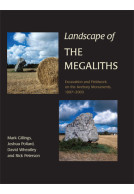Obsidian Vessels in the Prehistoric and Early Historic Near East (Paperback)
Pages: 160
Illustrations: 360 b/w and color imgaes
ISBN: 9798888570623
Published: 15th April 2025
Casemate UK Academic
(click here for international delivery rates)
Need a currency converter? Check XE.com for live rates
Obsidian, a shiny volcanic glass, was first used to make vessels in the mid-sixth millennium BC in the Near East, although other stone had been exploited for vessel manufacture since the thirteenth millennium BC. Unlike the stone used to make the earliest vessels, which was acquired from local and regional sources, obsidian had to be obtained from volcanoes located hundreds of kilometers from where vessels were made and used. The obsidian from these sources had long been exploited for making tools and by the tenth millennium BC obsidian artifacts can be found in communities located far distant from the sources. Nevertheless, it was not until the mid-sixth millennium BC that it was used to make vessels and even then they are rare: less than 200 have been found spread over four millennia (c. 5400–1500 BC). This is perhaps in part due to obsidian’s exotic origins but also because its comparative hardness and brittle nature made it difficult to work.To obtain a wider perspective on the use of obsidian for making vessels this book looks briefly at the properties of obsidian and the characteristics of the relevant sources and gives an overview of how obsidian has been understood and used by various communities around the world. The main part of the book examines the obsidian vessels found in the Near East. Previous studies have tended to take a site-specific viewpoint but here the opportunity has been taken to adopt a more holistic and integrated approach. This approach brings together different aspects of the vessels, including the provenance of the obsidian from which they were made, their morphologies, evidence for techniques of manufacture and the socioeconomic contexts in which they were produced and used, and attempts to determine whether the use of obsidian was of itself meaningful or significant.














